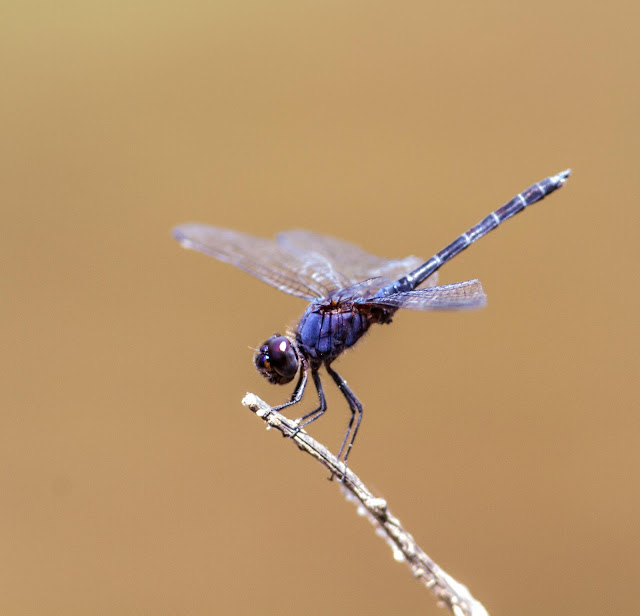Description
The Black Stream Glider (Neurothemis fulvia) is a species of dragonfly found in India and nearby continents.Black Stream Glider or Trithemis festiva is a medium sized dragonfly with purple color on its body structure.In the Male, the frontal area appears darker purple-ish grey. The eyes are dark brown above, with a purple colored tinge, which is blue-ish grey, lateral and beneath. The Thorax is Black, covered with purple pruinescence, which helps it appear deep blue. The Legs are black and wings are transparent with a dark opaque brown mark at the base of hind wing, with a black spot on tip of the wing. The abodomen is covered with fine blue pruinescence.
The Female looks dirty brown in the front and extends above. The eyes are dark brown above and appear more grey-ish below. Thorax is Greenish Yellow to Olivaceous, with the presence of a medial dark brown lateral stripe. In addition, a Y-shaped inverted stripes can be observed on the sides. Legs are Black with anterior femora being yellow on the inner side.
Wings are transparent with dark reddish-brown tip with a black spot, similar to the Male. Abdomen appears bright yellow with medial, lateral and ventral stripes, colored black, however, the medial and lateral black stripes form a confluence at abdominal segments to enclose a wedge-shaped yellow spot.Size: Male: Abdomen: 22-28mm, Hind wing: 26-32mm. Female: Abdomen: 21-24mm, Hind wing: 29mm.
Behavior, feeding and habitat
This dragonfly is commonly seen and has been mostly observed near slow flowing streams and canals, accompanying dense forest ranges. It usually perches on boulders adjacent to streams, rivers and canals. They have also been witnessed perched on tip of aquatic plants, dried plants and similar plants that grow near banks of a sluggish steam or river.
They have been observed to be little shy to human beings approaching them, however they are good observers of human beings. Even though people don't notice them, but these dragonflies watch the activities of human beings near them. Its flight activity is at the peak between May and November, but can be seen in other seasons only in quite small numbers, throughout oriental regions.
I am happy to contribute an article on this dragonfly, to Wikipedia which has never been recorded before by anybody in this world. Luckily I am the first person to create and list this dragonfly to the world for reference. I am thankful to my friends Ajith Kamath and Ranganath Bhat for choosing Someshwara as location for birding, where we could witness this beautiful living phenomenon of nature, right on the banks of Sita River.







No comments:
Post a Comment